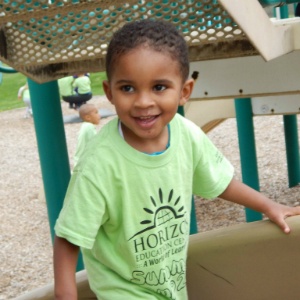 Perhaps your preschooler has developed a fear of the dark. She is certain that, when she lies down in bed, a monster lurks beneath the mattress – and the sound of a branch brushing against the window from the wind adds to the terror.
Perhaps your preschooler has developed a fear of the dark. She is certain that, when she lies down in bed, a monster lurks beneath the mattress – and the sound of a branch brushing against the window from the wind adds to the terror.
Should you panic? No. First, realize that everyone has some anxieties, even adults. Next, recognize that some fear is good. In “Childhood Fears and Anxieties,” WebMD quotes an expert as saying that, without fear, we’d “jump headlong” into dangerous situations. KidsHealth.org adds that, “Dealing with anxieties can prepare young people to handle the unsettling experiences and challenging situations of life.”
You can also take comfort that many preschoolers share fears in common, which reinforces their role in natural child development. According to WebMD, the following fears are common ones for preschoolers:
- The dark
- Noises at night
- Masks
- Monsters and ghosts
- Animals such as dogs
Although some of these fears can come from actual situations, much arises from your preschooler’s developing imagination. The reality is that children can often distinguish the real from the imaginary by the age of 4 or 5 – until fear kicks in.
Helpful tips
The Women’s and Children’s Health Network, a South Australian agency, reminds us that children (and most adults!) fear things they cannot understand or control, which includes new situations and objects. And, let’s face it. Because your preschoolers are young, much of the world feels new to them.
Anxiety can be passed along from parent to child, so remain calm and confident when dealing with your preschooler’s fears and don’t act as though you believe the fears are real (unless they do have a factual basis). Be open with your child and give age-appropriate information about those fears.
Here are more tips; these are from WebMD:
- Don’t simply tell your child not to be afraid and don’t force him or her into more than what’s comfortable
- Break the challenge into small steps, perhaps by reading a fun book by the light of a flashlight in the closet – to overcome the fear of a dark closet
- Have your preschooler create a happy journal, which may only consist of pictures that make him or her smile
- Reward efforts to overcome anxiety, no matter how small the steps taken
Meanwhile, KidsHealth.org points out that, as your child grows, one fear may replace another. As an example, a child afraid of the dark as a preschooler may grow up to love scary ghost stories but then develop another fear.
Fear or phobia?
How do you know? The first step is to recognize signs of fear. KidsHealth.org lists these symptoms of anxiety and fear:
- becoming clingy, impulsive, or distracted
- nervous movements, such as temporary twitches
- problems getting to sleep and/or staying asleep longer than usual
- sweaty hands
- accelerated heart rate and breathing
- nausea
- headaches
- stomachaches
Okay. So you are pretty sure your child is anxious. The next step is to consider whether or not your preschooler’s fear is age-appropriate. If so, it’s likely to disappear as he or she grows and steps included in this blog should help. But, if the fear appears out of proportion – and is a consistent pattern – consider seeking outside help, perhaps starting with your family doctor.
If you’re looking for a quality affordable preschool/child care program that provides educational programs and enrichment experiences that help prepare your child for K-12, contact the Horizon Education Center in your neighborhood.






